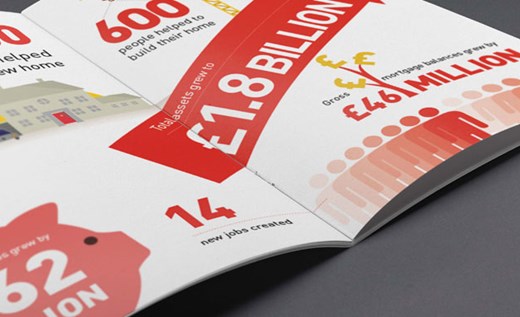The first quarter of 2025 sees Northern Ireland’s housing market return to more optimistic footing
Following a challenging end to 2024, Northern Ireland house prices are on the up due to improved lending conditions and renewed buyer interest.
View the latest NIQHPI
NI Quarterly House Price IndexFollowing a challenging end to 2024, Northern Ireland house prices are on the up due to improved lending conditions and renewed buyer interest.
The latest Northern Ireland Quarterly House Price Index Report (NIQHPIR) highlights that, after a slower end to 2024, the average price of properties (£212,996) was up 5.9% (on a weighted basis) than the first quarter of 2024.
The renewed momentum has been driven by enhanced consumer confidence and a more competitive mortgage landscape. With sub-4% interest rates and the expansion of low-deposit mortgage offerings from mainstream lenders, buying is becoming more accessible than it once was for many. This is reflected in rising bidding activity and greater volumes of new listings. Emerging signs of further interest rate cuts are expected, and even cheaper borrowing will almost certainly see this market optimism continue into the summer months.
However, an undercurrent of caution in the market remains. Economic and political uncertainty, particularly in relation to changes in stamp duty thresholds and wider fiscal pressures – such as increases in employer taxes and global trade disruptions – are casting shadows over the longer-term outlook. This is likely to temper market sentiment as we move into the second and third quarters of the year.
The NIQHPIR continues to deliver in-depth insights into the housing market, thanks to research by Ulster University in partnership with the Northern Ireland Housing Executive and Progressive Building Society. This specific report analyses the performance of the Northern Ireland housing market during the first quarter of 2025 (January, February and March).
Performance by property type
Research analysis by property type showed increasing prices across all house types, with terrace/townhouse averaging prices of £146,604 and semi-detached houses at £200,438 an annual increase of 3.6% and 3.4% respectively. The detached market showed an increase of 1.4%, bringing average prices to £307,761, and apartment prices jumped up 8.5% relative to last year’s price, to £164,665.
Geographic splits
While the findings do not necessarily indicate a particular trend, and likely reflect factors such as the type and age of dwellings, it is interesting that during this particular quarter the direction of price change was split along very broad east/west, urban/rural lines, with more tendency for growth in the locations further away from the wider Belfast metropolitan area.
As tends to be the case, the figures in the report paint a varied picture across Northern Ireland. Average house prices fell slightly in around half of the eleven local government districts, the majority of which were in proximity to Belfast. In contrast, the greatest price growth between Q4 2024 and Q1 2025 was in Derry & Strabane (6.8%). The Belfast City Council area also recorded quarterly price growth (3.1%), along with Newry Mourne & Down (4.0%), Mid Ulster (3.5%) and Armagh City, Banbridge and Craigavon. Prices also increased, albeit at a lower rate, in the Fermanagh and Omagh District (1.7%).
Introducing the findings, Dr Michael McCord, reader in valuation, investment and finance at Ulster University, and lead researcher stated:
“The Northern Ireland Housing Market has shown continued stability and growth in the first quarter of 2025, driven by positive market sentiment, increased listings and buyer activity. Signals from key lenders have also seen improved affordability due to the increased availability of low-deposit mortgage options and mortgage interest rates dipping below 4% for a number of products. Whilst the outlook remains cautiously optimistic, mounting headwinds do face the market moving further into 2025. Changes to stamp duty, global trade tensions, and uncertain macroeconomic conditions – such as a weakening UK job market could temper economic growth in the coming quarters. Whilst the increased market confidence is gaining momentum, the sector may face challenges and global economic pressures that could impact upon and shape market behaviour and pricing moving forward.”
Ursula McAnulty, Head of Research at the Housing Executive, which commissions the analysis, said:
“Q1 2025 saw a relatively settled housing market, with agents reporting a more positive market sentiment. The average price of a property in this quarter was £212,966, a 5.9% increase from Q1 2024. With 60% of agents reporting an increase in transactions from the previous quarter, and 65% reporting an increase in listings, this certainly is reflective of a more positive housing market. However, this positivity was mixed across local housing market geographies, with a general tendency for growth in locations further way from the wider Belfast Metropolitan Area.”
Michael Boyd, Chief Executive of Progressive Building Society, said:
“As we entered 2025, the Northern Ireland housing market showed welcome signs of renewed activity, with average prices rising slightly and bidding levels improving across most regions. Consumer confidence is holding firm, particularly in the mid-to-lower pricing segments, where buyer activity has increased. However, while this momentum is positive, economic uncertainty and upcoming fiscal pressures – particularly around stamp duty – mean the market remains finely balanced. The next two quarters will be crucial in determining whether this upward trend can be sustained.”

Speak to our team today
We’d love to talk you through the mortgage process and help you find a suitable product. For more information or to apply for an account, you can call us, email us, pop into one of our 11 branches. We look forward to hearing from you.



